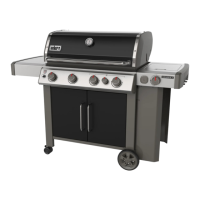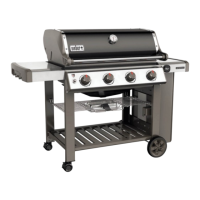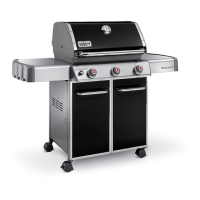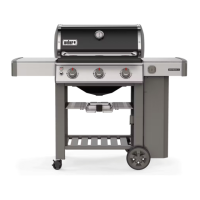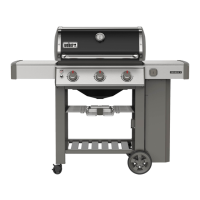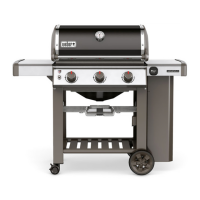11
K
J
3) If bubbles appear there is a leak:
a) If the leak is at the regulator-to-cylinder
connection or the regulator hose-to-regulator
connection (I), turn gas supply o. DO NOT
OPERATE THE BARBECUE.
b) If the leak is at any fittings indicated in illustration
(J), re-tighten fitting with a wrench and recheck
for leaks with soap and water solution. If leak
persists, turn o the gas. DO NOT OPERATE THE
BARBECUE.
c) If the leak is at any fittings indicated in illustration
(K), turn o the gas. DO NOT OPERATE THE
BARBECUE.
If a leak is present, contact the Customer Service
Representative in your area using the contact
information on our website.
4) If bubbles do not appear, leak checking is complete:
a) Turn gas supply o and rinse connections
withwater.
NOTE: Since some leak test solutions, including soap and
water, may be slightly corrosive, all connections should be
rinsed with water after checking for leaks.
Additional Leak Check Precautions
The following fittings should be tested for gas leaks
each time a tank is refilled and reinstalled:
• At the regulator and where the regulator connects to the
cylinder(I).
Follow the instructions for "Checking for Gas Leaks".
Disconnect the Regulator from the Cylinder
To remove a cylinder:
1) Confirm that the LPG cylinder valve or regulator
lever are fully closed.
2) From inside cabinet release the clasp on the cylinder
retention strap.
3) Disconnect the regulator.
4) Remove the cylinder.
Use caution if replacing an LP cylinder (tank) during
a cooking session. The entire cook box and grease
management system gets hot when in use. Always wear
heat resistant gloves or Mitts when handling the LP
Cylinder (tank). Fasten cylinder strap after connecting
new cylinder.
Getting Started
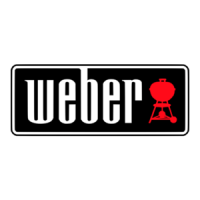
